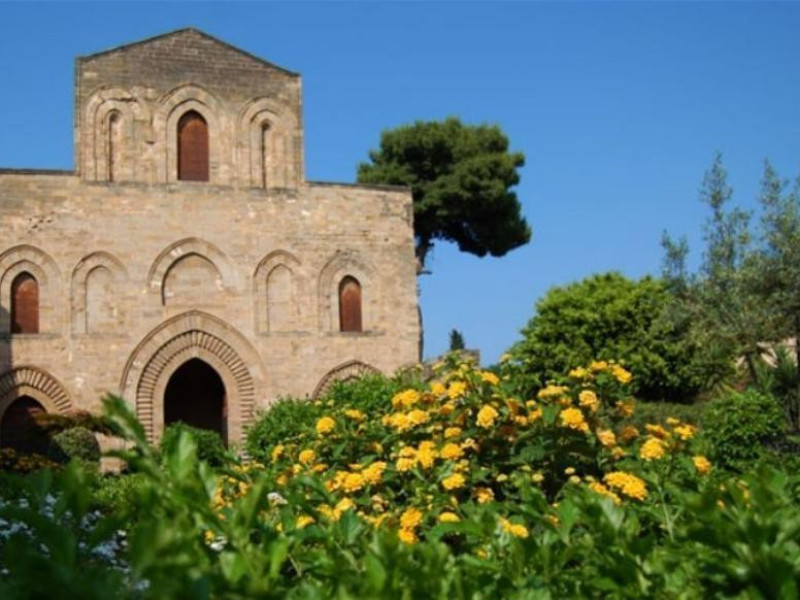Ex Convento della Magione
Also known as the Church of SS Trinity. With the adjacent abbey of the Cistercians, the church was founded in 1191 by Matthew Ajello, chancellor of the Norman kingdom. In 1197 it was given to the Order of the Teutonic Knights, and becames the seat of the "Mansio", the preceptor of the order: hence the name of the Mansion. The church is the last building built by the Normans in Palermo. It combines the basic geometric shapes derived from the Fatimid, found in the wall facing outside and in front, with a distribution of the interior spaces of Nordic origins. Among the works of art in the church are to be mentioned: two stoups of the sixteenth century on either side of the entrance; the Tomb of F. Perdicaro (d. 1576), possibly by Vincenzo Gaginis, placed under a stone cross of the fifteenth century with the emblem of the Teutonic Knights; belong to the sixteenth century, a Virgin and Child with a blessing Christ, both from the workshop of Gagini; a tabernacle from 1528 and a Madonna painted on the blackboard, a marble triptych of the late Gothic, with a central Madonna and Child with St. Catherine. The Pieta di Campini, 1953, was placed at the entrance, instead of sculpture by Vincenzo Gagini destroyed by bombing in the Second World War. In the floor, finally, there are the graves of the Teutonic Knights '400, whose tombstones are exhibited in rooms adjacent to the cloister. The cloister, mutilated and placed on the short sides - against the most commonly used - to the west of the church, is all that remains of the original Cistercian monastery. By a door on the left of the facade we can enter in the Chapel of St. Cecilia, in which there are interesting works of art: a large fresco of the Crucifixion, a fragment of a thirteenth-century fresco and the Sinopia red ocher of the crucifixion same.

